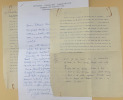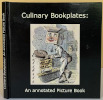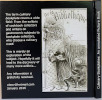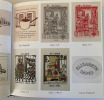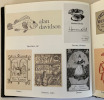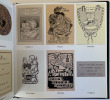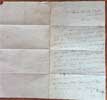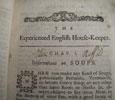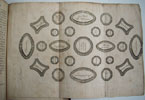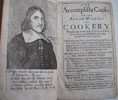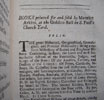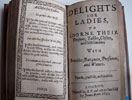SULAISGIER.
Photographs by James MacGeoch. Catriona MacGeoch / with John Love & Finely MacLeod. A small shield device of Acair Books (the publisher)
FIRST EDITION. 2010. 215 x 250 mm. 2feps. 1p Photograph of Gannets. Half-Title. Title Page. Verso Contents. 1p Preface. Verso with Dedication. 4p James MacGeoch. 1p Graham MacGeoch. A letter reproduced. 1p Map of Sulaisgier. xvi - xviii James MacGeoch 1914-1970. xix - xxvi Eathar Shulaisgier in Gaelic. 1p Photoraph. (2) 4-130 b&w Photographs. [1] 132 - 136 Descriptions of Photographs. 2 feps. Back and front covers with b&w Photographs In fine condition with a CD of film enclosed. Text in English and Gaelic.
- This fine book by Catriona MacGeoch is a dedication to her father, James MacGeoch who took most of the b&w photographs and Catriona wanting to record the strong tradition of the hunters of Sulaisgier. Condensed from an article in The Scotsman newspaper online, about a filmed documentary that centres on a venture every August to a remote Atlantic outcrop called Sùlaisgeir. It is an annual ritual that was first recorded in the 16th century about the young Gannet (called Guga in Gaelic) hunters, who are licensed by Scottish Natural Heritage to kill 2,000 three-month old young Gannets who have just shed their soft white baby feathers and acquired their dark adult plumage Film crews follow the ten men from the remote community of Ness (who are known collectively as Niseachs), on Lewis, on the Outer Hebrides, as they venture for the cull approximately forty miles north by boat. After the team arrive ashore following a five-hour sea trip, they set up their camp, covering an ancient bothy with tarpaulin and building a chute and pulley system so they can move equipment up and dead birds down the soaring cliffs. A radio transmitter is put up to allow contact with home. The men live on the island for two exhausting weeks, sleeping rough in the bothy, which was first constructed by monks over a thousand years ago. Using time-honoured traditional methods, the hunters work ceaselessly and dangerously, killing and processing the 2,000 birds by catching them with a long pole and clip, before it is quickly stunned by hitting it on the back of the head with a stick, then beheaded. The cliffs are very slippery and the men bind their shoes with rough canvas to allow some grip (see image #3 below). The dead Guga are then plucked, cut open and splayed, removing the innards and singeing the skin with flames, then covering with rough salt inside and out, and finally stacked in a neat but tightly layered pile. They are then, at the end of the hunt, sent down the chute to be taken back to Ness with the hunters, whom one imagines that by this time, probably smell pretty ripe themselves. The film gives rare access to the hunters who read from the Bible twice a day, sleep top to tail in the cramped bothy and hold a bar-b-q on their last night, of roasted Guga, marinated in madras powder and whisky. The film features Dods MacPhárlain, who holds the licence for the hunt, as he embarks on his 42nd and final trip to Sùlaisgeir. He said: “I’ve smelt the Guga since I was a year old so I was destined to go. It means so much to me. That’s probably why I have been going for over forty years. A tradition which spans centuries, the hunt is the last of its kind in the UK. The flesh of the young gannet is regarded as a delicacy in Ness today though, for others, it is an acquired taste. The Guga smell very strongly once processed during the hunt and stored. Many Ness women will not allow them into the house. It was a popular meat in earlier times in Scotland. In the sixteenth century it was served at the tables of Scots kings and was a favourite with the wealthy as a ’whet’ or appetizer before main meals. This is a fascinating insight into a community still carrying forward a very old tradition. What is also compelling, is to realize that this extremely dangerous hunt of the Guga would have started as a pragmatic necessity of survival. In other articles online, one reads that the extreme smell of the preserved seabird is almost addictive. It also mirrors the famous Hákarl, the national dish of Iceland consisting of a Greenland shark or other sleeper shark which have been cured with a particular fermentation process and hung to dry for four to five months. The smell being as objectionable to the unsuspecting nose as the Hebridean Guga. Other very obnoxious smelly fare are the dried fish of India and Vietnam that show the same need for preservation as the more easily acceptable Bacalhau of Portugal and Spain. In this time of storage freezers, fast national and international transportation and distribution of fresh fish and meats, it's amazing that a love for those foods has stayed so strong. Just as Dods MacPhárlain said above, that the smell of Guga since he was one year old compelled him to carry the tradition forward and to crave the taste of that preserved young bird.

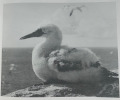

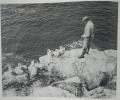
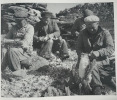

click on image to enlarge

Modern category
ref number:
11267 




